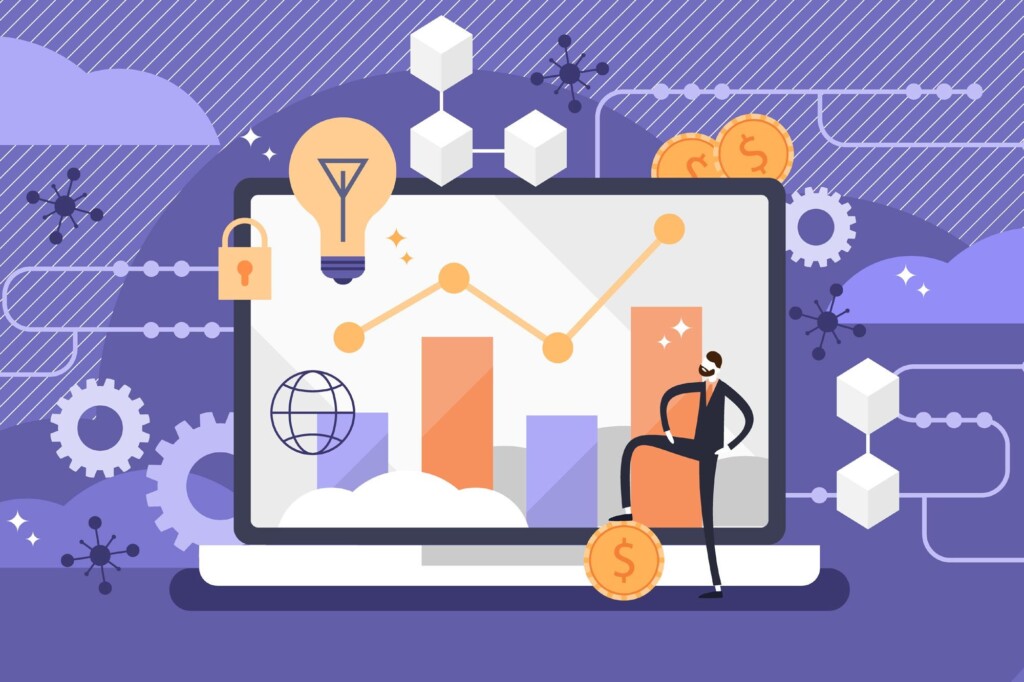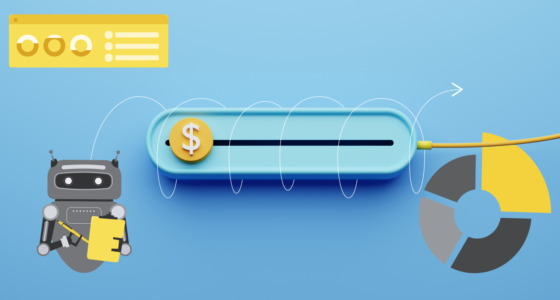

Fun fact: In the 7th century CE, ancient China introduced a revolutionary financial innovation — paper money. These early banknotes were known as jiaozi and marked a major shift in the world of finance. Jiaozi replaced heavy metal coins, and now, there is something else replacing traditional financial systems. Enter the fintech revolution.
Fintech revolution: an overview

Fintech, a blend of finance and technology, is a relatively new term but has quickly changed how individuals and industries handle money. More specifically, in the last 20 years, fintech companies used smart technology and apps to make financial services better. They solved problems people had with traditional banks, offering easy-to-use digital services, reaching those who couldn’t access banking before, and finding cheaper ways to offer financial services.
What is financial tech?
Mostly known as a short version “fintech”, it’s the fusion of financial and technology that includes apps, software, or any digital technology that allows individuals or businesses to gain insights about their finances or conduct financial transactions online.
Simply put, fintech simplifies how people handle money in the digital age. It’s the tech behind online banking, effortless investing, and smart budgeting. As technology keeps progressing, fintech will play an even bigger role in changing the financial landscape, making financial services easier and more accessible for everyone.
What is the fintech revolution?
The integration of technology into finance has steadily been happening for a while, and it started with innovations like the ATM in the 1960s and card payments. But even then, the space was dominated by traditional financial institutions.
Speaking of such, traditional financial institutions, like banks and credit unions, have historically served three main functions: holding money, lending money, and moving money. Fintech has disrupted each of these functions.
As for moving money, cryptocurrencies are worth noting as a major development. By decentralizing the financial sector and bypassing traditional banks and payment channels, this technology, underpinned by blockchain, offers an alternative means of exchange. Payment-focused fintech companies like Stripe, Venmo, Alipay, and Apple Pay have also made their mark and brought new, efficient ways to handle transactions to the masses.
On the lending side, fintech businesses have introduced innovations like buy-now-pay-later services, peer-to-peer lending platforms, and automated underwriting programs that use AIe and algorithms to speed up credit decisions. Since they simplify borrowing for consumers and businesses, it reduces the need for traditional financial institutions.
Even the function of holding money is evolving. For instance, virtual banks gaining prominence and offering services that are entirely online. Investing has also witnessed a transformation, with robo-advisors and savings apps becoming popular among younger consumers and challenging traditional brokerage firms.
On top of that, the fintech revolution has given rise to various subcategories, including defi (decentralized finance), insuretech (insurance technology), and regtech (regulation technology), among others.

What makes fintech different from the industrial revolution?
The industrial revolution marked a shift from agrarian and manual labor-based economies to mechanized and industrialized ones. Back then, the top innovations were steam engines, factories, and mass production.
In contrast, fintech is part of the fourth industrial revolution, and it’s driven by emerging technologies like robotics, artificial intelligence, blockchain, and more. These technologies focus on automation, data exchange, and digital transformation.
So, the key difference between these changes lies in their nature: the industrial revolution transformed industries by revolutionizing production methods, while fintech is revolutionizing finance through digitalization. Both stress the need to embrace technology, but fintech mainly focuses on meeting the financial sector’s needs in our digital world.
Technologies shaping fintech

McKinsey report points out seven important technologies that are driving fintech progress:
Artificial intelligence
AI enhances financial modeling, identifies patterns, and respects privacy by using minimal, sanitized data. It powers customer services like tailored products, chatbots, and robo-advisors, and improves back-office tasks like fraud detection. Analysts expect AI to add $1 trillion annually to the banking industry for banks to adopt an AI-first strategy to stay competitive.
Blockchain
Blockchain’s evolution includes cross-chain technology, and key technologies underpinned by it, like smart contracts, zero-knowledge proofs, and distributed data storage, remain pivotal in fintech.
Also, DeFi has seen explosive growth, with $2.1 trillion in digital assets locked up in under a year, further elevating blockchain’s disruptive potential.
Cloud computing
Emerging trends here include edge computing, cloud containers, and AI-cloud integration. These innovations free financial institutions from IT complexities, enable scalability, and give rise to concepts like open banking. Moreover, cloud-based microservices are set to revolutionize banking by offering more flexibility.
Internet of things
IoT consists of three layers: smart sensors, communication networks, and applications.
McKinsey specifically highlights IoT’s role in helping ESG goals, such as carbon emissions reduction, where sensors monitor energy efficiency. In banking, it enhances risk management and trade finance through real-world data matching, and insurers use IoT for precise risk assessment and improved customer engagement.
Open source
To foster financial innovation, speed, and scalability, new businesses are turning to open-source software, serverless architecture, and SaaS.
SaaS allows flexible software usage without ownership, serverless reduces costs and fosters scalability, and open-source software accelerates application development. These technologies work best when combined.
No-code and low-code
No-code and low-code platforms help bridge the talent gap in software development and can automate tasks like audit trails and document generation. They’re especially valuable for financial institutions and fintech companies that need to adapt quickly to market changes.
Hyper automation
Hyper automation means using technologies like AI, deep learning, event-driven software, and RPA to make work more efficient.
RPA is already widely used in digital transformation, and it’s evolving to fit the needs of fintech. It is already automating various financial processes in middle and back-office operations.
Challenges and opportunities
Challenges for fintech startups and how to address them:
- Funding hurdles — Attracting investors demands detailed financial plans, long-term strategies, and idea validation through statistics or user surveys.
- Investor search — Standing out among competitors for funding is tough, so a comprehensive pitch deck presentation is essential.
- Giant competition — Startups often face giants like PayPal and Amazon, which is why they must focus on underserved markets or solve B2B issues to succeed.
Challenges for incumbents in fintech:
- Data security — Increasing data breaches heighten cybersecurity concerns, but implementing security features and regular penetration testing can mitigate risks.
- Regulatory compliance — Staying compliant with numerous regulations is complex. To tackle this, companies can hire legal experts or dedicated compliance personnel to avoid fines.
- Tech expertise — Since outdated tech affects user experience, consider engaging fintech developers to modernize services.
- User experience — Low user retention leads to income loss, which is why businesses need to work on improving the user experience through gamification and personalization.
- Personalization — AI-driven personalization, such as push notifications and recommendations, helps meet user preferences and interests.
Future trends in fintech

Technologies like blockchain and open banking, which have been paramount in the current fintech era, will continue to drive the space.
Other than that, machine learning will take on a bigger role in creating personalized experiences and tailoring offers and support based on individual behavior. For instance, digital banks like N26 and Revolut are already using ML to provide custom offers and budgeting assistance. Chinese insurer Ping An is using algorithms to assess and settle claims quickly by analyzing factors like vehicle type and damage severity.
The concept of the “segment of one” signifies a future where financial tools and business management systems are highly individualized, catering to the unique needs of each user.
Fintech is also reshaping how businesses manage payments and finances, with integrated payment providers emerging in sectors like e-commerce and service-based industries. Platforms like Shopify, Housecall Pro, and Mindbody offer comprehensive business management systems with integrated payment solutions.
Neobanks, or digital-only banks, are another rising trend in fintech. Their popularity is on the rise because they provide virtual banking services like simple P2P transfers, affordable international money transfers, contactless MasterCards with no fees, and even the option to buy crypto.
Takeaway
The future of financial services depends on embracing new technologies, but it’s not a journey for any single organization to undertake alone. It’s influenced by economic, social, and political changes. To succeed, collaboration is essential, so financial institutions, fintech companies, associations, and regulators must work together to overcome challenges and maximize the benefits for businesses and society.
For a deeper understanding of fintech and its components, Binomo offers a rich collection of resources. Check out additional materials on the website!
Sources:
An introduction to fintech: Key sectors and trends, S&P Global
Fintech – challenges and opportunities, McKinsey & Company
Global fintech 2023: reimagining the future of finance, Boston Consulting Group









